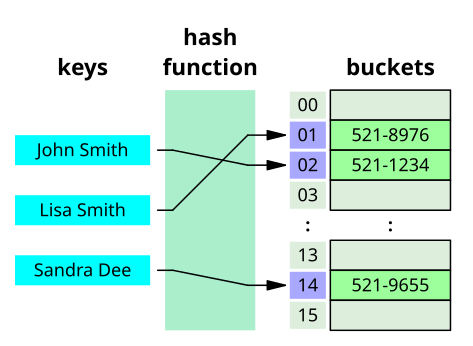Data structure
In Computer Science, A data structure is a particular way of organizing data in a computer so that it can be used efficently and effectively.
Data Structure denotes the way data is organised.The type of datastructure that is to be used depends on the user requirement.
Data Structures defines the structure to the data.By the datastructures data is organised in particular manner and retrived with out problem.
Different kinds of data structures are suited to different kinds of applications, and some are highly specialized to specific tasks.
For example: B-trees are particularly well-suited for implementation of databases, while Complier implementations usually use Hash Tables to look up identifiers.
"Data structures provide a means to manage large amounts of data efficiently, such as large databases and internet index servicing."
Usually, efficient data structures are a key in designing efficient algorithms.
Some formal design methods and programming languages emphasize data structures, rather than algorithms, as the key organizing factor in software design.
Storing and retrieving can be carried out on data stored in both main memory and in Secondary memory.
 |
Hash tableA Hash TableTypes of Data Structures:
>STACK
>QUEUE-----
{CIRCULAR QUEUE}
>LINKED LIST------
{SINGLE LINKED LIST} {DOUBLE LINKED LIST} {CIRCULAR LINKED LIST}.
>HASH TABLE.
>ARRAY.
STACK : MAIN THING IN STACK IS STACK[TOP].
WE CAN INSERT AND DELETE ONLY FROM TOP OF THE STACK..
QUEUE:
IT CONTAINS FRONT AND REAR
QUEUE[FRONT],QUEUE[REAR].
INSERTIONS ARE PERFORMED AT REAR END.
DELETIONS FROM FROM FRONT END.
ARRAY:
IT IS HOMOGENOUS COLLECTION OF ELEMENTS....
ARRAYNAME[SIZE]
EX:A[10]={5,45}
HASH TABLE:
HASH TABLE CONTAINS KEY AND VALUE PAIRS.
IT USES HASH FUNCTION
hash(k,v) where k is key and v is value.
DATA STRUCTURE HIERARCHY:
|


No comments:
Post a Comment